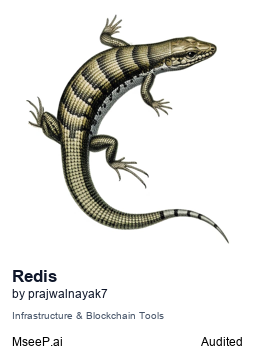About
The Redis MCP Server lets agentic applications query, update, and search Redis using natural language commands. It integrates with MCP clients to enable AI workflows that manage structured and unstructured data in Redis efficiently.
Capabilities

The Redis MCP server bridges the gap between AI assistants and a live Redis instance, enabling intelligent agents to perform real‑time data operations without leaving the conversational context. By exposing a rich set of resources and tools, it turns Redis into a first‑class data source that Claude or other LLMs can query and mutate on demand. This eliminates the need for developers to write custom adapters or embed raw Redis commands in prompts, streamlining workflow integration and reducing cognitive load.
At its core, the server provides resource endpoints that give quick insight into the health and configuration of the Redis deployment. Clients can fetch connection status, server statistics, or list keys that match a pattern—all through simple URLs. These resources are invaluable for monitoring and debugging during an AI session, allowing the assistant to report on infrastructure health or locate specific data without manual inspection.
Complementing the resources are a suite of actionable tools that map directly to common Redis operations. Basic key/value manipulation (set, get, delete, increment) is available alongside specialized commands for lists, hashes, sets, and the publish/subscribe paradigm. Each tool is wrapped with robust error handling and reconnection logic, ensuring that transient network hiccups do not derail the assistant’s workflow. The design encourages a declarative style: an LLM can simply call with the desired key and value, and the server handles all underlying communication.
Real‑world scenarios that benefit from this integration include data validation pipelines, stateful chatbot sessions, and real‑time analytics dashboards. For example, a customer support assistant can store session metadata in Redis, retrieve it for context continuity, and publish updates to downstream services—all within a single conversation. Developers can also use the server as a backend for custom LLM plugins, allowing external systems to expose Redis operations as part of their conversational interface.
The MCP server’s architecture is intentionally modular. Resources live in dedicated modules, while tools are grouped by data type, making it straightforward to extend the server with additional Redis commands or custom logic. Because the server automatically reconnects on connection loss, it remains resilient in production environments where network stability can be variable. In short, the Redis MCP server delivers a dependable, low‑friction bridge that empowers AI assistants to harness the full power of Redis without compromising developer productivity.
Related Servers
MarkItDown MCP Server
Convert documents to Markdown for LLMs quickly and accurately
Context7 MCP
Real‑time, version‑specific code docs for LLMs
Playwright MCP
Browser automation via structured accessibility trees
BlenderMCP
Claude AI meets Blender for instant 3D creation
Pydantic AI
Build GenAI agents with Pydantic validation and observability
Chrome DevTools MCP
AI-powered Chrome automation and debugging
Weekly Views
Server Health
Information
Explore More Servers
Bootiful WordPress MCP Server
Seamlessly integrate WordPress with Claude Desktop
Adamik MCP Server
Control 60+ blockchains via natural language conversations
Python Runner MCP Server
Secure Python execution for data science workflows
LibSQL MCP Server
MCP interface for LibSQL databases
Balldontlie MCP Server
Sports data for NBA, NFL and MLB in one API
Bridge Rates MCP Server
Real‑time cross‑chain bridge rates for onchain AI